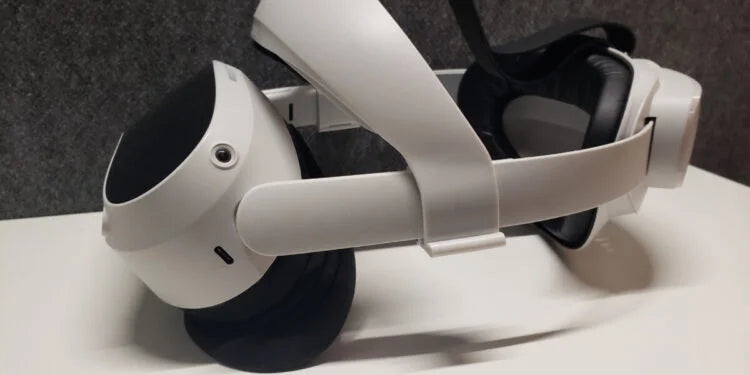
A Comfort Enhancement for Pico 4 that’s also a design mod – The Review of AMVR 3–In-1 Headstrap
While the Pico 4 might not have been on the market for long, it has already amassed a notable number of third-party accessories. There are carrying cases, battery packs, controller add-ons, and of course, various comfort solutions, which is where the AMVR 3–In-1 Headstrap fits in.
Disclosure: AMVR supplied the 3-in-1 kit, but had no input on this review. All opinions are my own.
Table of Contents
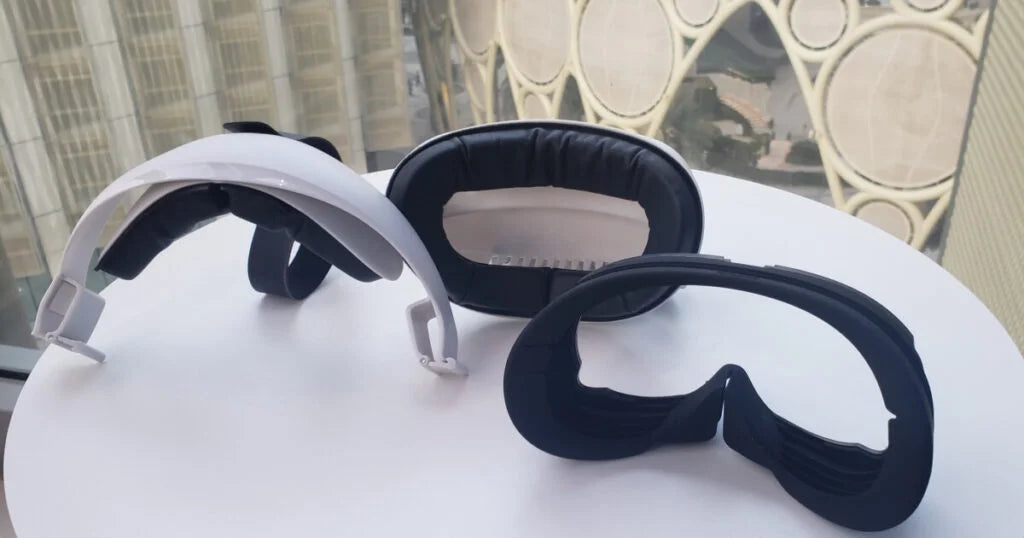
First Impressions and Installation
The accessory comes in two boxes, a smaller one consisting of a silicone face cushion, and a bigger one, which holds the forehead pad, back pad, Velcro strap, and all the smaller pieces. There’s also a small thank-you booklet, which is always a nice touch.

The installation consists of a couple of steps. Removing the front padding is fairly straightforward thanks to magnetic pins. The back padding is a bit more fiddly and must be detached with a “crowbar,” which is a plastic tool included in the box. Finally, the forehead support is added by clipping it to straps and then sliding it into place.

Crowbar tool for ejecting the back pad
The only part I found tricky was the top Velcro strap, which for the life of me I could figure out how to connect. That is until I looked it up online and realized it’s not actually possible without removing the front leather pad. Having solved that puzzle, it was all smooth sailing. I had the whole thing assembled quickly and ready to put on.
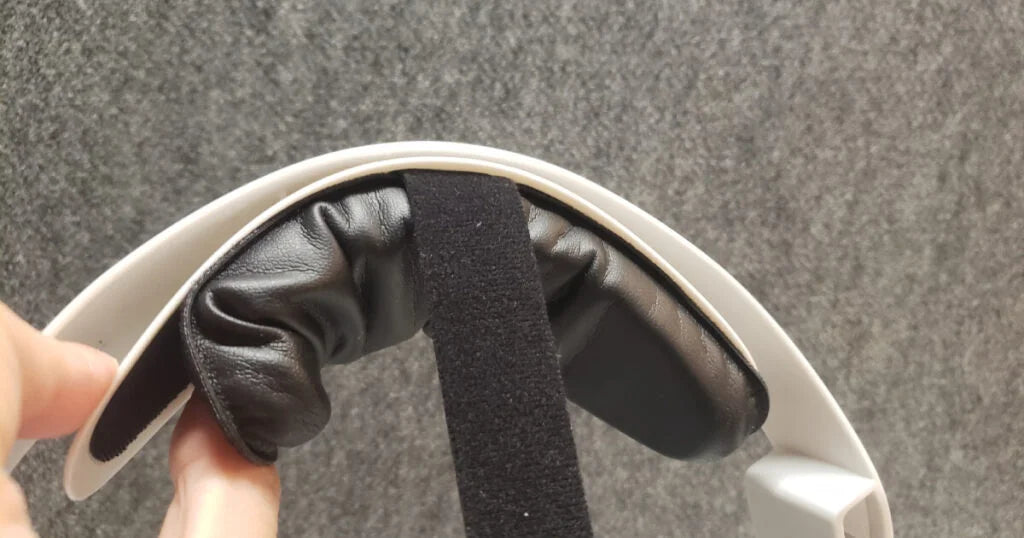
Connecting the Velcro was an unexpected puzzle
Piece-by-Piece Overview
Let’s start with the back padding, as this bit is the most obvious. The original stock pad is quite sturdy but also hard and inflexible. What AMVR does is replace it with a cushy and much softer leather one. As one would expect, the difference is noticeable, especially when leaning back, but also when standing or sitting. This component works as a part of the 3-in-1 setup but could very well work as a comfort mod on its own.

AMVR back padding vs. the stock padding
The top part is where design innovation lies. It doesn’t just provide additional comfort through its padding, it actually shifts the pressure from the sides to the top. It took me a couple of tries and I had to move the forehead support more towards the front to get the Pico 4 to sit nicely, but once I found the sweet spot, I was surprised to notice that not only had the comfort improved, the headset itself started to feel lighter as well.
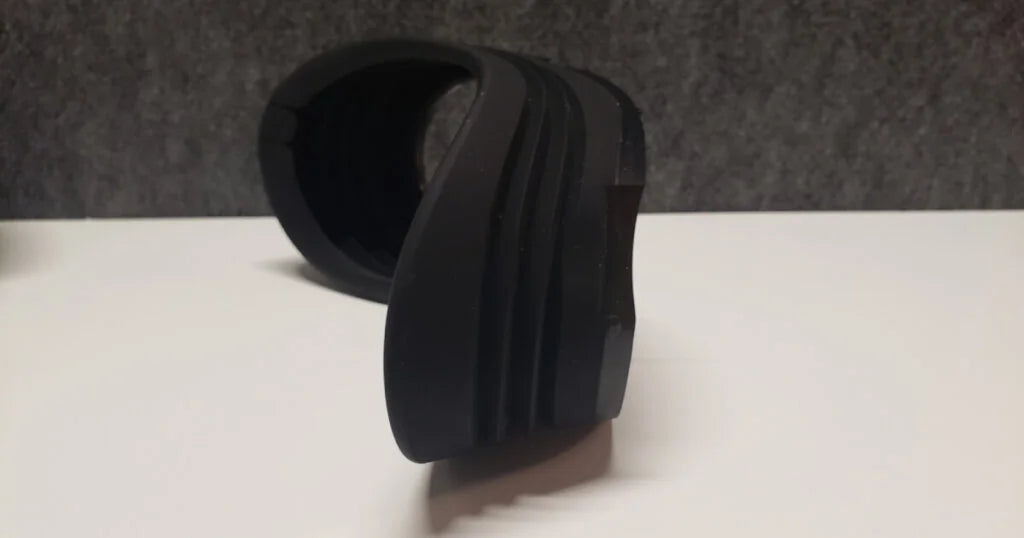
Silicon Face Cushion
As a result, the last piece of the 3-in-1, the silicone face cushion, is in fact more of an enhanced light blocker than a face pad. At that point, all the pressure rests on the top support, with the back providing an additional buffer. It’s also possible to remove the front padding altogether and turn the Pico 4 into a flip-up headset — both of which were not possible before. This is why the 3-in-1 head strap is not just a typical comfort booster but also a design mod.
Testing and Conclusions
So how does the AMVR headstrap mod fare in practice? Well, as you can expect it fares very well. I had a chance to test it out in a full five-hour session, first playing games like Walkabout Mini Golf and then, when the battery ran out, watching a movie with the Pico 4 plugged in. I made it through without any issues. I can say confidently that the comfort is higher because the original padding would often pinch the bridge of my nose, leading to redness and pain during extended play sessions. Not having to deal with this problem was a big improvement for me.
While not required, the AMVR 3–In-1 Headstrap could work well in combination with a facial interface replacement. With the 3-in-1 head strap, there’s a limit to how close you can get to the screen, since as I mentioned, the silicone face cover is more of a light blocker than a cushion. Turn the back dial too much and the front becomes unpleasant. For those who want to maximize their FOV and get so close to the virtual worlds that their eyes almost touch the lenses, an additional facial interface accessory is recommended.
Removing the face cushion altogether turns the headset into a semi-open device akin to Quest Pro, but since the Pico 4 lacks any advanced passthrough or hand-tracking capabilities, looks are where the similarities mostly stop. The Pico 4 lenses are not designed to work in such circumstances so the lack of side blockers can cause significant glare and reflections, but at the same time, having peripheral vision extending into the real world can be very useful in a public setting. Use cases could range from productivity apps to workouts to just about anything that requires maintaining awareness of your surroundings.

Pico 4 AMVR 3–In-1 without the Silicon Face Cushion
I tried using the Pico 4 in this format at a gym (together with a passthrough browser) and it worked as intended. Granted. I happened to be there all by myself, but not having to wonder about what was happening around me helped relieve the feeling of insecurity and focus solely on the treadmill. Obviously, AMVR is not advertising this as a Pico 4 to Quest Pro converter and I’m not suggesting users should remove their front cushions en masse, but it is an interesting potential that I found worth exploring.
Finally, cleaning the AMVR is also easy, since it’s all made of leather, plastic, and silicone. These are neutral, non-absorbent materials so a quick wipe or rinse should be enough.
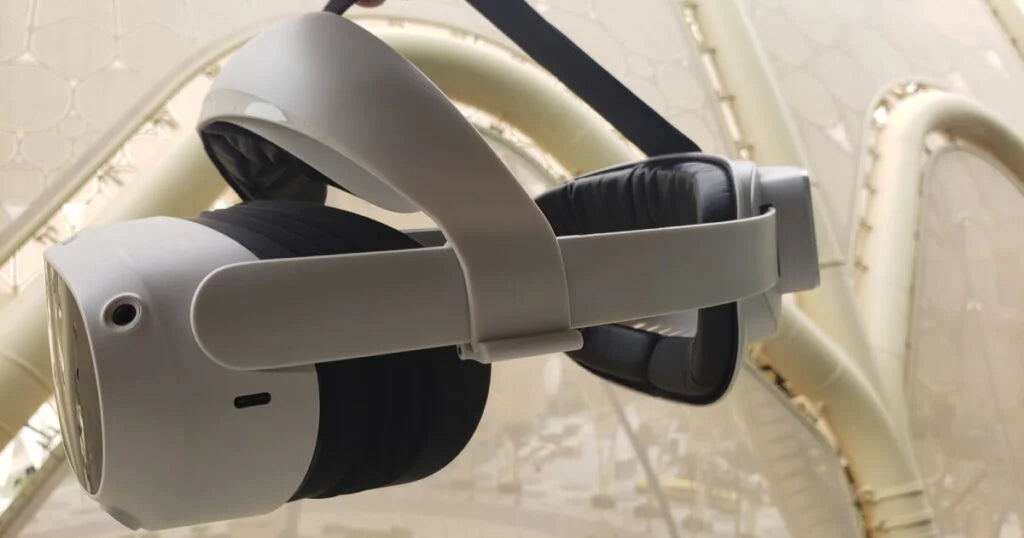
Pico 4 AMVR 3–In-1 Headstrap
Comfort is hard to quantify. For some it might mean the difference between putting the headset on or not, and for others it’s just a quality of life improvement, as they would spend time in XR regardless — but can now do so more comfortably. For others, it’s a difference between two versus three hours spent inside. The AMVR 3-in-1 Head Strap retails for $48, which I would consider reasonable. It provides notably good value to power users, though casual users will also find the improvements beneficial.

